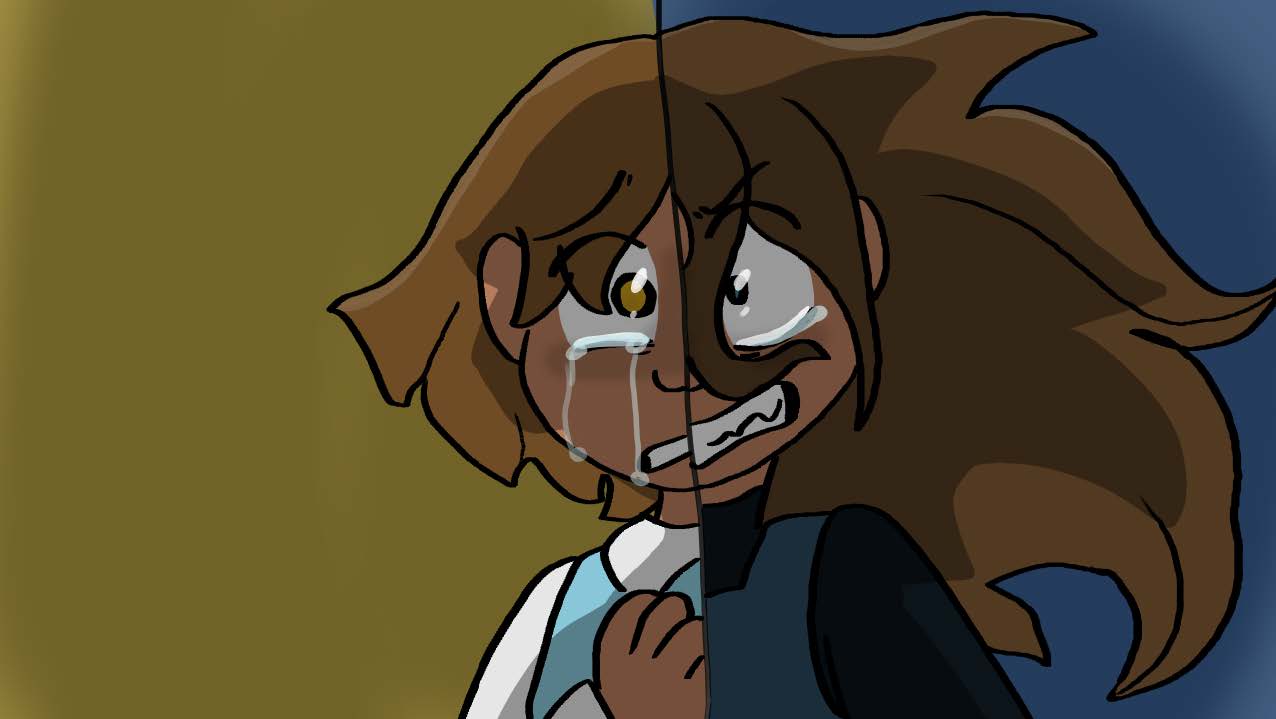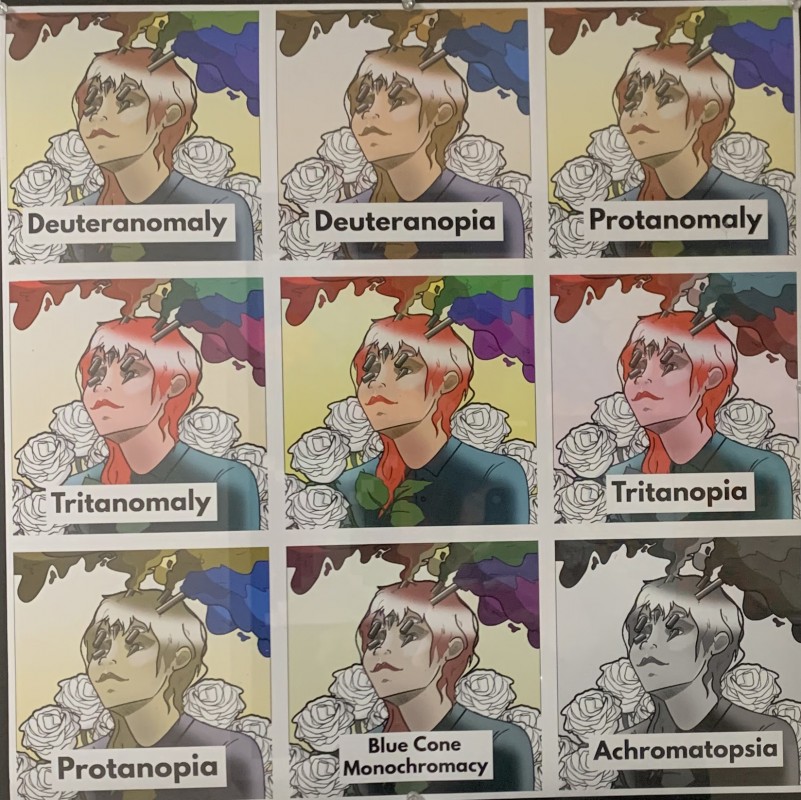Shifting perspective: Anthropology class sparks creative exploration of human difference

When colorblind people look at a piece of art, what precisely do they see? What cultural stories surround twins?
Students in Binghamton University Professor of Anthropology Joshua Reno’s Disability in Culture and Society course tackle complex questions such as these and find creative ways to illustrate their findings — literally, in some cases.
Evie Tordesillas, a senior majoring in philosophy, politics and law, drew on her own experiences to create a short film animated by her fraternal twin sister Ely, a freelance artist, while Victoria Cherichetti, a senior chemistry major, produced original artwork that depicts the different vision patterns of color-blindness.
Disability is an integral part of the human condition and faced by many — if not most — people as they age, Cherichetti reflected. In class, students learn about and discuss such topics as visible and invisible disabilities, accessibility and what is considered an impairment, which is often culture-dependent; left-handedness, for example, isn’t considered a disabling condition today, but it was in other times and cultures.
“Disability is often thought of as a purely medical issue. In this class, students are encouraged to look beyond that to imagine it as a more complicated form of difference,” Reno said. “The projects they choose to do are one way they can help other people understand that as well.”
Tordesillas, who is on a pre-law track, chose the course due to her interest in constitutional law.
“I find that people with disabilities or categorized as ‘disabled’ are a minority that needs more support and legal individuals to voice their opinions and stories,” she reflected.
While not considered disabled, twins face stigma in some societies or are considered exceptional in a way that leads to differential treatment, Tordesillas explained. Many cultural stories involving twins consider each to be a part of a whole or tied to a particular destiny; they may possess “opposite” traits and fight each other to prove dominance.
In fact, that’s exactly what happens in Tordesillas’ animated poem, although it doesn’t reflect her own experience as a twin. Evie created the story, character designs and the poem for the project, while Ely created the visuals.
“In a way, I found the twin project brought me closer to my own twin, since we collaborated on a creative project and had fun doing it. But if I think about it, a lot of people are known to their friends or family just as ‘the twins,’” she reflected. “I experienced this when I was younger, but that’s barely the case anymore as we both formed our identities and lives.”
Cherichetti’s project was also inspired by a personal connection; one of her best friends has colorblindness, which she didn’t realize for years. She chose the project as a way to learn more about the condition.
Colorblindness is not uncommon; during her research, Cherichetti discovered that about 300 million people globally have some form of the condition, although it’s most common in Caucasians and males, the latter because it’s a recessive trait carried on the X chromosome. Initially, she assumed that there were only three types of colorblindness — red-green, blue-yellow and total — but it turns out there are multiple types, most often based on the type and configuration of cone cells in the eye.
In her art project, Cherichetti rendered a photo with different colors to show the impact of the most common forms of colorblindness on perception. Now on display in the Fine Arts Building, the modified image features an individual of unspecified gender or race with rods and cones coming out of their eyes; the rods are in the shape of factory smokestacks.
“It’s a hyper-visualization of colorblindness,” she said. “The rods in the shape of smokestacks are meant to show the constant production of color processing, and the different versions show the variations of how colors would be perceived by that individual.”
While the poster was created with the non-colorblind eye in mind, it’s just as effective for people with colorblindness. They will be able to perceive the changes in other people’s perceptions, even if they can’t see them in quite the same way.
“You’ll see it shift based on the stimuli you’re able to perceive, but it still gets that idea across,” Cherichetti explained.



